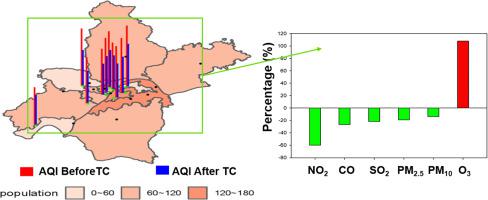Science of the Total Environment ( IF 9.8 ) Pub Date : 2020-06-30 , DOI: 10.1016/j.scitotenv.2020.140556 Xinbo Lian 1 , Jianping Huang 2 , Rujin Huang 3 , Chuwei Liu 1 , Lina Wang 4 , Tinghan Zhang 1

|
A series of strict lockdown measures were implemented in the areas of China worst affected by coronavirus disease 19, including Wuhan, to prevent the disease spreading. The lockdown had a substantial environmental impact, because traffic pollution and industrial emissions are important factors affecting air quality and public health in the region. After the lockdown, the average monthly air quality index (AQI) in Wuhan was 59.7, which is 33.9% lower than that before the lockdown (January 23, 2020) and 47.5% lower than that during the corresponding period (113.6) from 2015 to 2019. Compared with the conditions before the lockdown, fine particulate matter (PM2.5) decreased by 36.9% and remained the main pollutant. Nitrogen dioxide (NO2) showed the largest decrease of approximately 53.3%, and ozone (O3) increased by 116.6%. The proportions of fixed-source emissions and transported external-source emissions in this area increased. After the lockdown, O3 pollution was highly negatively correlated with the NO2 concentration, and the radiation increase caused by the PM2.5 reduction was not the main reason for the increase in O3. This indicates that the generation of secondary pollutants is influenced by multiple factors and is not only governed by emission reduction.



























 京公网安备 11010802027423号
京公网安备 11010802027423号